The dairy industry in South Africa is one of the largest agro-industries in the country, employing more than 40,000 people. The dairy farm business involves owning a few dairy cows and milking them twice a day. This requires knowledge of dairy diseases, understanding of milking equipment, proper housing and feeding of dairy cows, and assurance of complete hygiene and hygiene during milking and milk processing. First, let’s check out more information about Dairy farming in South Africa.
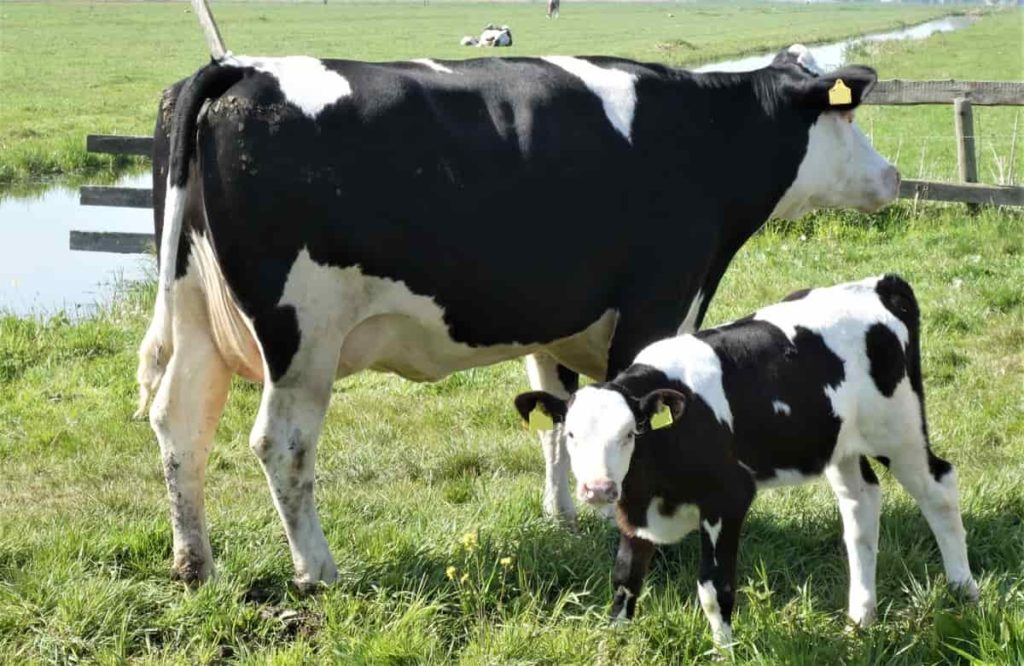
The dairy industry in South Africa can play an essential role in meeting a growing population’s food security and nutritional needs. Currently, there are 1.2 million dairy cows and about 1,200 dairy farms in South Africa. Milk production is the fifth largest agro-industry in South Africa. Milk provides regular income to many small and large producers and is produced every day. Milk production is very labor-intensive and employs many people.
Things you need to know about dairy farming in South Africa
For dairy farming, choosing the right breed is essential to ensure healthy animals, good yields, and strong offspring for long life. The dairy industry in South Africa’s fifth-largest agro-industry provides sustainable livelihoods to thousands of large and small producers across the country.
In dairy farming, large-scale commercial producers sell milk to dairy processors. Small and medium-sized producers sell milk directly to consumers and also processors. Dairy processors produce dairy products for distribution, export, and further processing to retailers. The dairy industry faces the following risks according to Milk SA;
- Uncertain climatic conditions affect herds and adequate food production;
- Uncertain product pricing;
- The possibility of a sudden decline in the product market;
- Therefore, farmers can reduce the risk through good management and proper planning.
In case you miss this: Dairy Farming in the Philippines: Breeds, How to Start.
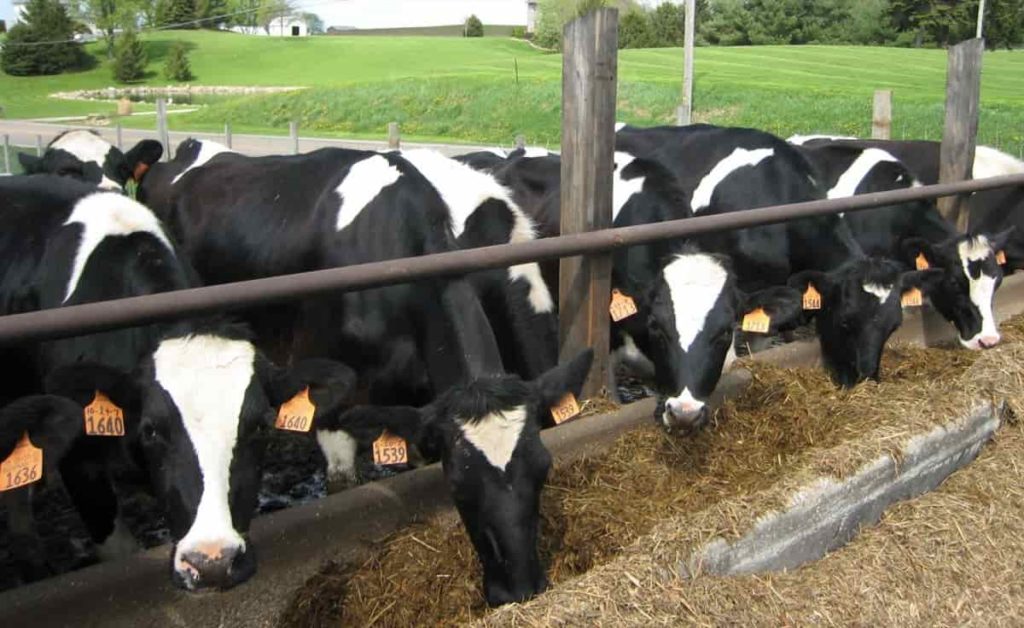
How to choose a breed
For commercial dairy production, the breed selection depends on personal preferences, environmental factors such as weather conditions, available feeds, and the final milk product, for example, if you want to sell milk or make cheese. For instance, cheese processors prefer milk to be solid (fat and protein) milk produced by Jersey cows. On the other hand, Holstein cow’s milk is more suitable for liquid products such as milk or yogurt. All breeds of cattle, and some breeds of goats, are capable of providing extra milk for the needs of their young.
If one keeps one or two cows for purely domestic purposes, it is unnecessary to keep a dairy cow, as beef can also be given milk. Though, for commercial milk production, permanently higher production is necessary if a dairy enterprise maintains its viability. In the world’s largest dairy countries, production tended to be higher early. However, some problems have arisen, leading to a worldwide trend towards high yields with good butterfat and protein synthesis, which is essential for pricing high ingredients for protein during a long life.
Dairy breeds in South Africa
In South Africa, six cattle breeds are recognized as “dairy breeds.” Holstein Friesland, Jersey, Guernsey, Ayrshire, Switzerland (brown- and dairy), and dairy shorthorn. Other dairy breeds like Red Poll, Simmentaler, Dexter, and South Devon, are occasionally seen in the milking parlor. Dairy breed selection can be a difficult decision. Though, if you know which breed suits your needs, you will be able to choose and buy the right breed.
Buying a Dairy farm
Buying a dairy farm is not a decision you should make without consulting many experts and considering many factors, as it involves a considerable investment. You should learn more about the following key elements;
- Reliable power availability.
- Existing dairy facilities and equipment.
- Distance from the nearest town to the farm.
- Current milk route of milk buying companies.
- Condition of roads leading to the farm.
- The current agreement with the milk purchasing company.
- Sufficient water availability.
- Possibility to create a lot of roughage.
- Existing pastures and soil types.
In case you miss this: Equipment Needed for Dairy Farming: Small Dairy Machinery Details
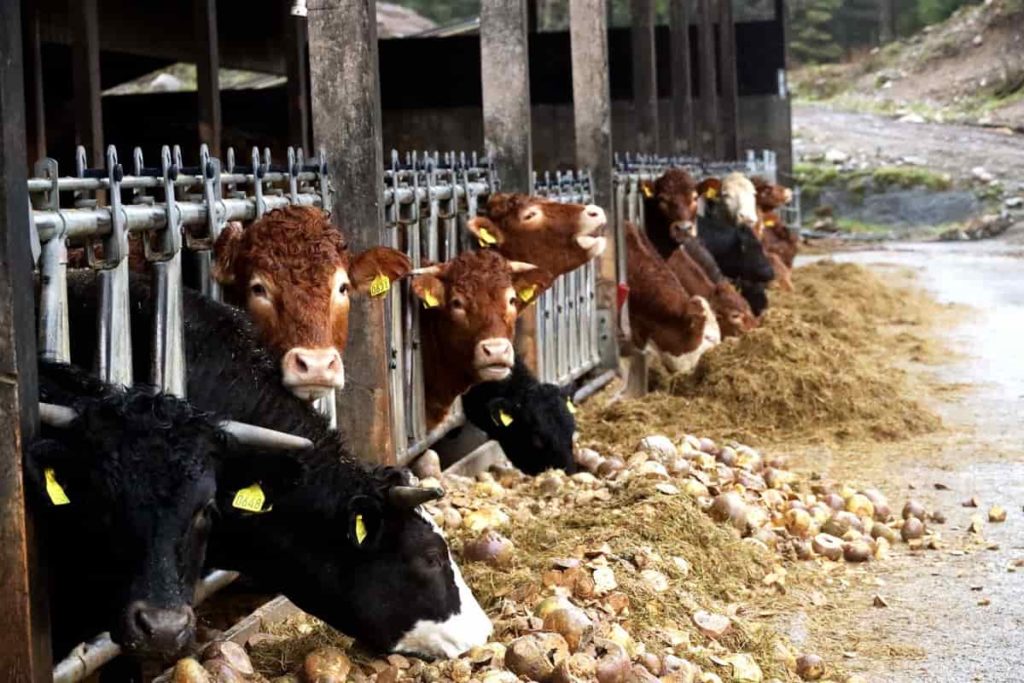
Which dairy cattle breed to choose?
Most cows can be milked for domestic use, but four cattle breeds are specialist dairy cows for commercial dairy farming in South Africa. These are;
Holstein
This breed is the most common of the dairy breeds, and in addition to its black and white color markings, it produces more milk than other dairy breeds. Holstein is the most famous dairy breed in the world and South Africa. It is white and black and is a large animal (large framed). These animals are unusually high milk producers and can be marketed as meat. Holstein sometimes has difficulty calving and is not suitable for long-distance walking. Its milk is low in butter. The Holsteins are not as heat resistant as some other dairy breeds.
Jersey
Jersey can range in color from light to dark brown and is the smallest of the dairy breeds. The most heat tolerant dairy breeds produce milk with high butter content (best for ice cream). These are smaller than other dairy breeds and are popular in South Africa. They are light brown and are known for their excellent teats and calving ease. Jersey adapts well to hot areas. Due to their small size, they eat less and graze better.
Guernsey
Guernsey can range in color from cow to fawn and often has white legs and white parts on its body. Guernsey is light reddish-brown and white. It makes calves easily and has a high-fat content in its milk. Guernsey is slightly larger than Jersey but smaller than Holstein. Guernsey adapts well to almost any climate and is known for its good temper and well-connected to the udder.
Ayrshire
It is also known as the “aristocrat” of dairy breeds because of its vigor and size. They are rusty red and white and adapt easily to their environment. Ayrshire is slightly smaller compared to Holstein and can be culled for meat. It is white and reddish-brown and produces milk with a high butterfly content. Its milk is mainly suitable for drinking milk. Ayrshire can operate in cold and hot climates.
In case you miss this: Dairy Farming in Denmark, Breeds, How to Start
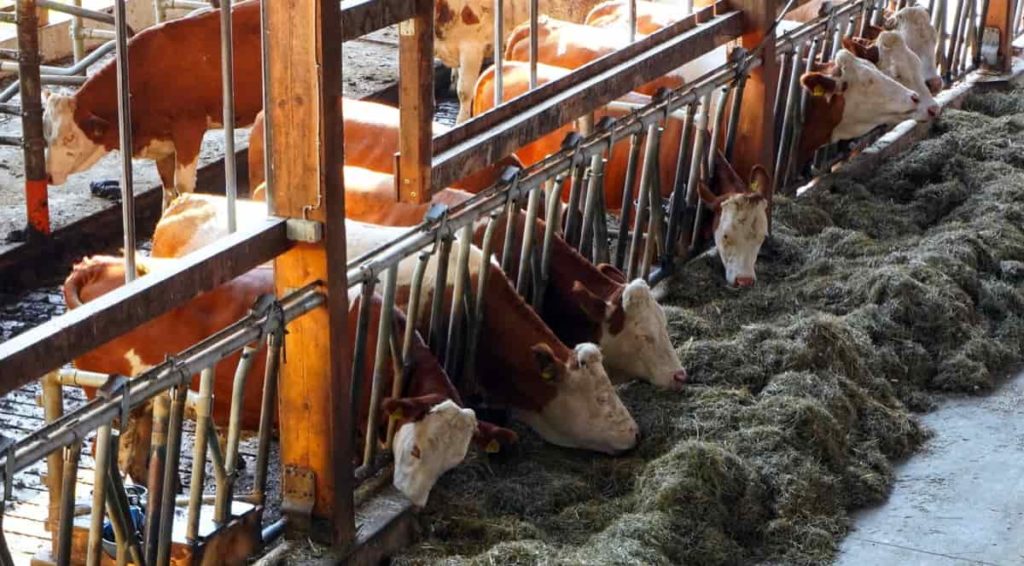
Imported breeds need better living conditions like houses or shelter and better-quality food. Due to adaptation issues, cross-breeding is becoming popular among expert dairy breeds and indigenous breeds.
Dairy goat breeds
British Alpine, Saanen, and Toggenburg are three breeds contributing to South Africa’s small dairy goat industry. Most goat’s milk is processed and sold as goat’s cheese. Thus, the milk quality, especially the casein content, is essential.
Feeding management
High-quality forage is the biggest constraint for smallholder dairy production in South Africa due to soil quality and climate. This is why successful smallholder dairy farmers pursue their fodder with concentration. The higher the quality of fodder produced on the farm, the less concentration (grain) must be purchased or produced. Fodder requirements can be met by pastures utilization, green chips, silage, hay, or both.
Silage or grass is prepared to provide dry weather during the rainy season, where rainfall is limited. Smallholder dairy farmers use animal behavior knowledge to improve the well-being and productivity of cows. For example, watering and feeding systems should be placed where young or inexperienced animals can find them. Access to feed can be more important than the actual amount of nutrients provided. In addition to producing some coarse milk, young green farms also help the pastures.
In case you miss this: Top 50 Dairy Farming Tips, Ideas, and Techniques
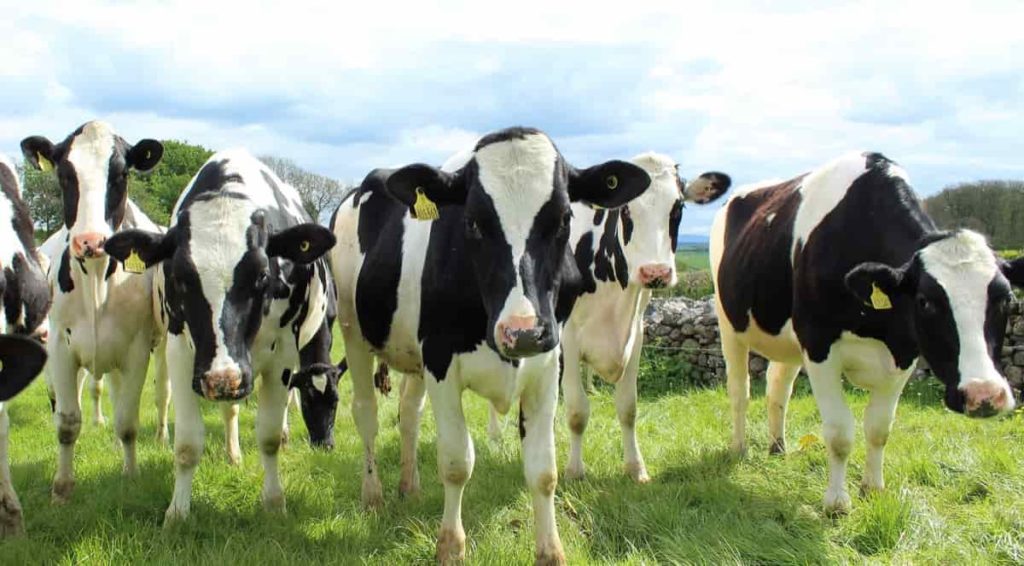
Green pasture is the most economical food for dairy cattle, considering the nutritional value and production cost. Effective pasture use is a special way to reduce feed costs in dairy herds. Fodder for their livestock is one of the highest costs for a dairy producer, whether from their grazing land or crops being grown or purchased. Pasture-based dairy producers spend more time and effort maintaining the pastures and thus provide fodder to their cattle.
Pasture management methods such as grazing are standard for milk production. Many large dairies that feed their livestock have a dedicated nutritionist responsible for preparing the food based on animal health, milk production, and cost-efficiency. The diet must be differentiated according to each animal’s growth rate, milk production, and reproductive status to maximize output. The health and productivity of dairy animals and the quality and safety of their milk depend primarily on the provision of proper food and water.
Feeding methods used by small-scale dairy producers in developing countries require grazing, which requires large areas. Tethering allows full use of roadsides, farming areas, etc., and stall or pan feeding, which requires more labor input. They are fed to either the whole herd or individual animals when supplements are provided. In addition, dairy animals use large amounts of water for milk production and pregnancy. Therefore, access to water significantly affects milk production.
Milking hygiene
Most small-scale dairy farmers milk their animals by hand in developing countries. Hand-feeding allows where enough labor is available, milking with minimal investment, equipment maintenance, and cleanliness. However, with modernity, these milking practices are disappearing. On medium to large dairy farms, where better dairy breeds are used, it is more common and convenient to milk animals with milking machines.
Regardless of the method of milking (hand or machine), it is essential to prevent milk contamination during and after milking. Good dairy farming practices ensure that lactation practices do not harm animals or contaminate milk for milk hygiene. Naturally, though, this milking is done under hygienic conditions.
In case you miss this: Dairy Farming In Australia – Australian Cow Breeds
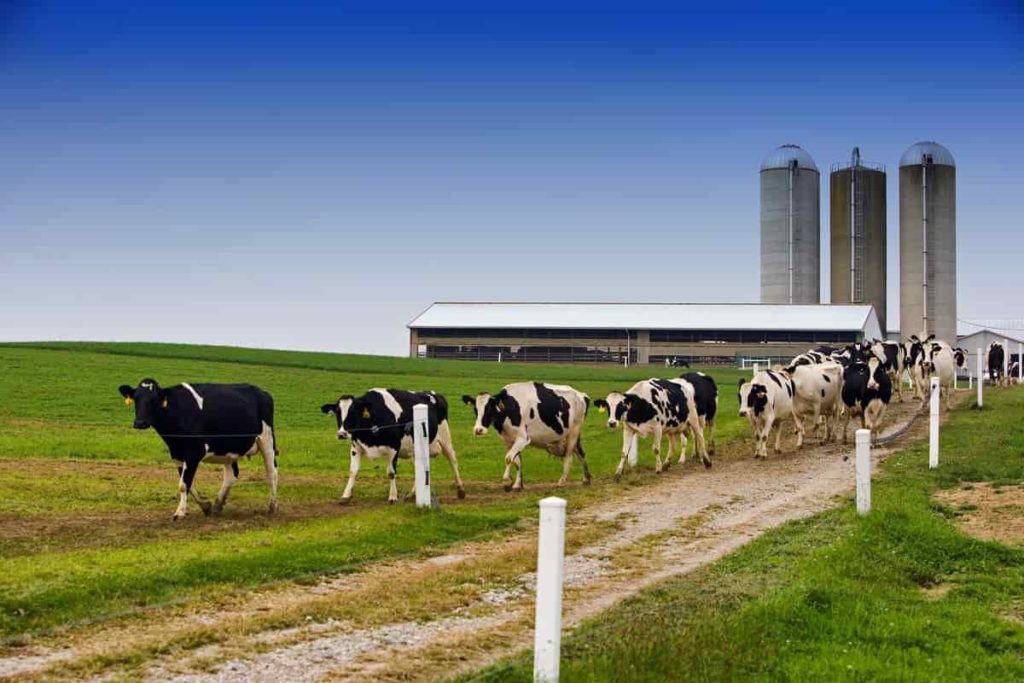
Challenges facing smallholder dairy farmers
Rural-urban migration in South Africa has increased milk demand through food and income. To meet the demand, the relatively low productivity of small dairy cows needs to be improved by removing various barriers that affect small farmers. Poor use of new technologies, lack of training and finances, low milk prices, food shortages, poor farm management, low productivity and reproductive efficiency, and high prevalence of diseases are the main barriers for smallholder dairy farmers. Also, poor record-keeping, poor sterilization services, and a productive environment are constraints to small owners’ dairy development.
- Economical Aquaculture: A Guide to Low-Budget Fish Farming
- 15 Common Planting Errors That Can Doom Your Fruit Trees
- How to Make Houseplants Bushy: Effective Tips and Ideas
- Innovative Strategies for Boosting Coconut Pollination and Yield
- Pollination Strategies for Maximum Pumpkin Yield
- The Complete Guide to Chicken Fattening: Strategies for Maximum Growth
- Natural Solutions for Tulip Problems: 100% Effective Remedies for Leaf and Bulb-Related Issues
- Revolutionizing Citrus Preservation: Towards a Healthier, Greener Future
- Natural Solutions for Peony Leaf and Flower Problems: 100% Effective Remedies
- Maximizing Profits with Avocado Contract Farming in India: A Comprehensive Guide
- Natural Solutions for Hydrangea Problems: 100% Effective Remedies for Leaf and Flowers
- The Ultimate Guide to Choosing the Perfect Foliage Friend: Bringing Life Indoors
- From Sunlight to Sustainability: 15 Ways to Use Solar Technology in Agriculture
- The Ultimate Guide to Dong Tao Chicken: Exploring from History to Raising
- The Eco-Friendly Makeover: How to Convert Your Unused Swimming Pool into a Fish Pond
- Mastering the Art of Delaware Chicken Farming: Essentials for Healthy Backyard Flocks
- 20 Best Homemade Fertilizers for Money Plant: DIY Recipes and Application Methods
- How to Craft a Comprehensive Free-Range Chicken Farming Business Plan
- Brighten Your Flock: Raising Easter Egger Chickens for Beauty and Bounty
- How to Optimize Your Poultry Egg Farm Business Plan with These Strategies
- Subsidy for Spirulina Cultivation: How Indian Government Schemes Encouraging Spirulina Farmers
- Ultimate Guide to Raising Dominique Chickens: Breeding, Feeding, Egg-Production, and Care
- Mastering the Art of Raising Jersey Giant Chickens: Care, Feeding, and More
- Ultimate Guide to Raising Legbar Chickens: Breeding, Farming Practices, Diet, Egg-Production
- How to Raise Welsummer Chickens: A Comprehensive Guide for Beginners
- How to Protect Indoor Plants in Winter: A Comprehensive Guide
- Ultimate Guide to Grow Bag Gardening: Tips, Tricks, and Planting Ideas for Urban Gardeners
- Guide to Lotus Cultivation: How to Propagate, Plant, Grow, Care, Cost, and Profit
- Agriculture Drone Subsidy Scheme: Government Kisan Subsidy, License, and How to Apply Online
- Ultimate Guide to Raising Araucana Chickens: Breed Profile, Farming Economics, Diet, and Care
- Bringing Hydroponics to Classroom: Importance, Benefits of Learning for School Students
- Ultimate Guide to Raising Polish Chickens: Breed Profile, Farming Economics, Diet, and Care
- Ultimate Guide to Raising Australorp Chickens: Profile, Farming Economics, Egg Production, Diet, and Care
- Silkie Chicken Farming: Raising Practices, Varieties, Egg Production, Diet, and Care
- Sussex Chicken Farming: Raising Practices, Varieties, Egg Production, Diet and Care
- Homemade Feed Formulations for Livestock: Discover Cost-effective Starter to Finisher Feed Recipes